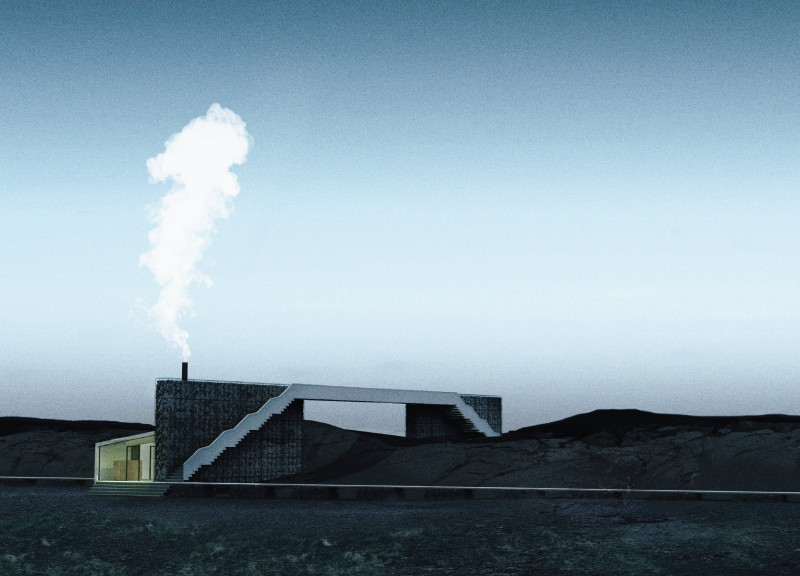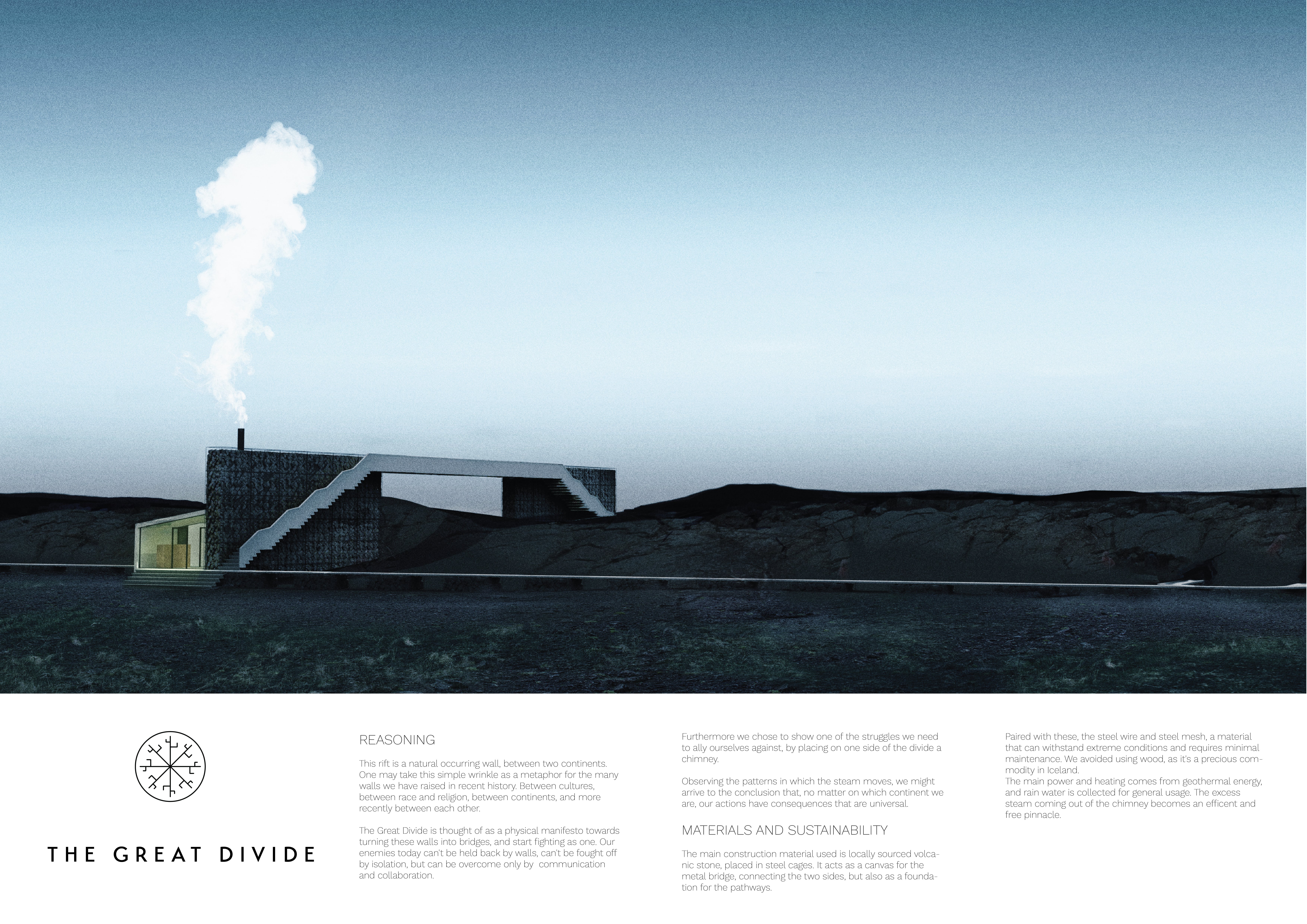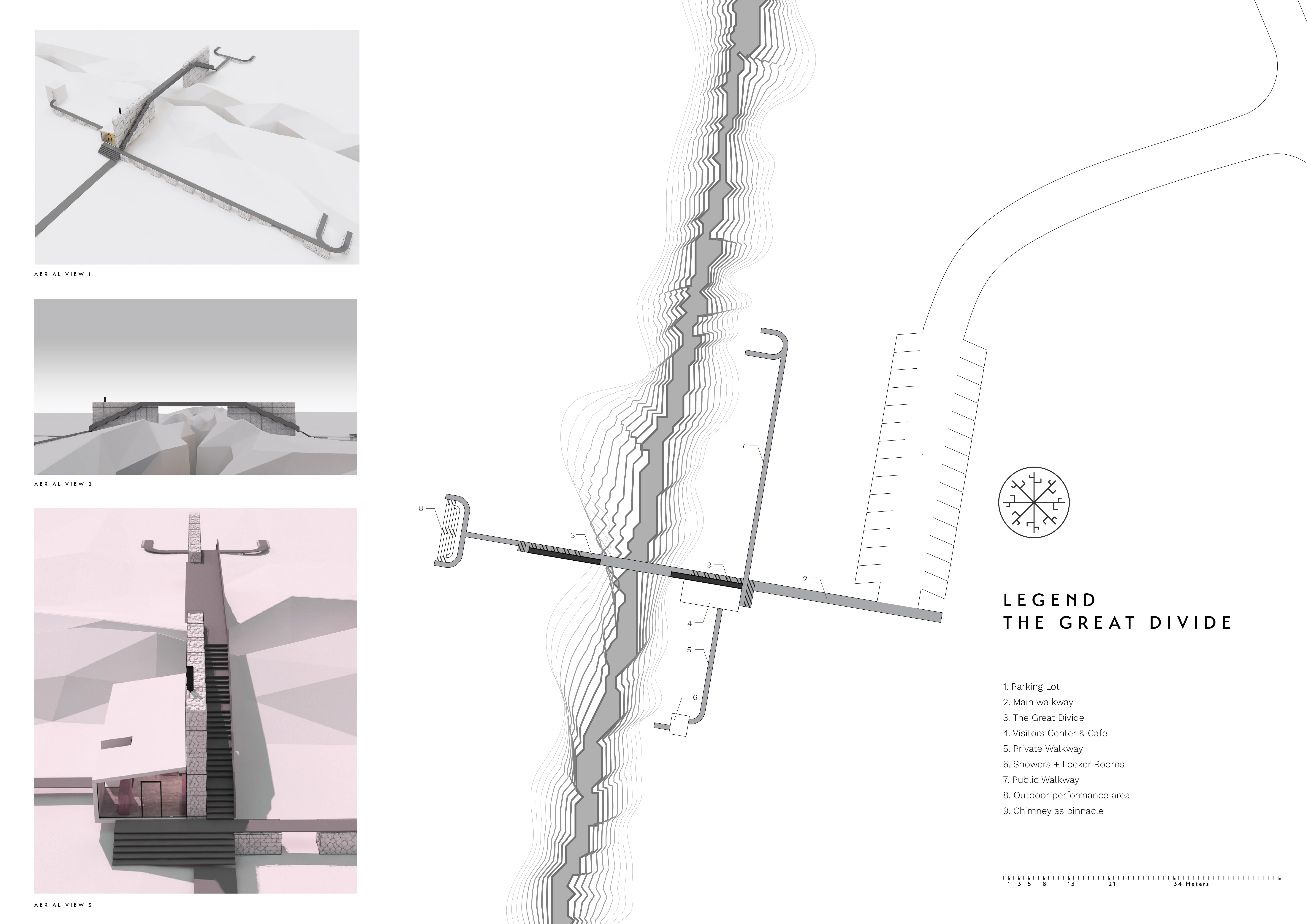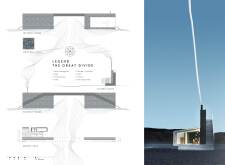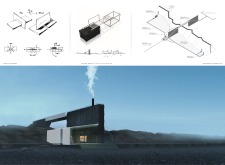5 key facts about this project
The Great Divide explores themes of separation and unity in a striking natural landscape. Set in Iceland, this project focuses on a large rift that runs between two continents. The design concept uses this divide as a metaphor for the many divides that exist in society today, including those based on culture, race, and religion. By overcoming these barriers, the design seeks to promote communication and collaboration among people from various backgrounds.
Design Concept
At the core of the design is a chimney that stands prominently on one side of the rift. It serves both a symbolic and a practical function. Steam escapes from this chimney, visually connecting the two sides of the divide. This element highlights the significance of human actions in shaping the environment and facilitates reflection on broader issues.
Materiality
The project primarily uses locally sourced volcanic stone, arranged in steel cages to provide structural support. This choice is logical, drawing on the natural resources available in the region while ensuring durability. The volcanic stone creates a connection to the landscape, complementing its rugged beauty. Steel wire and mesh further enhance the structure's integrity, chosen for their strength and minimal maintenance needs.
Spatial Configuration
Pathways wind through the site, designed to encourage movement and engagement. These routes invite visitors to explore and interact with the surroundings. Bridges are incorporated into the design to create connections between divided areas, emphasizing unity and fostering collaboration. The pathways and bridges guide visitors on a journey through the project, inviting them to reflect on the themes presented.
Observation Points
Various observation points are integrated throughout the design, offering spaces for contemplation. Here, visitors can appreciate the view and witness the steam rising from the chimney against the backdrop of the landscape. These areas encourage a deeper understanding of the relationship between human activity and the natural world. The careful placement of these observation points supports the project’s overall intention, engaging users in meaningful reflection on their connection to the environment.


